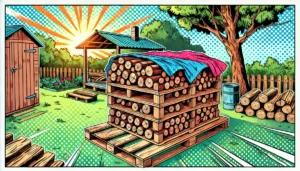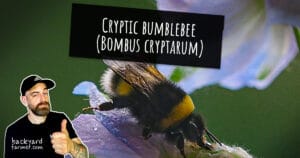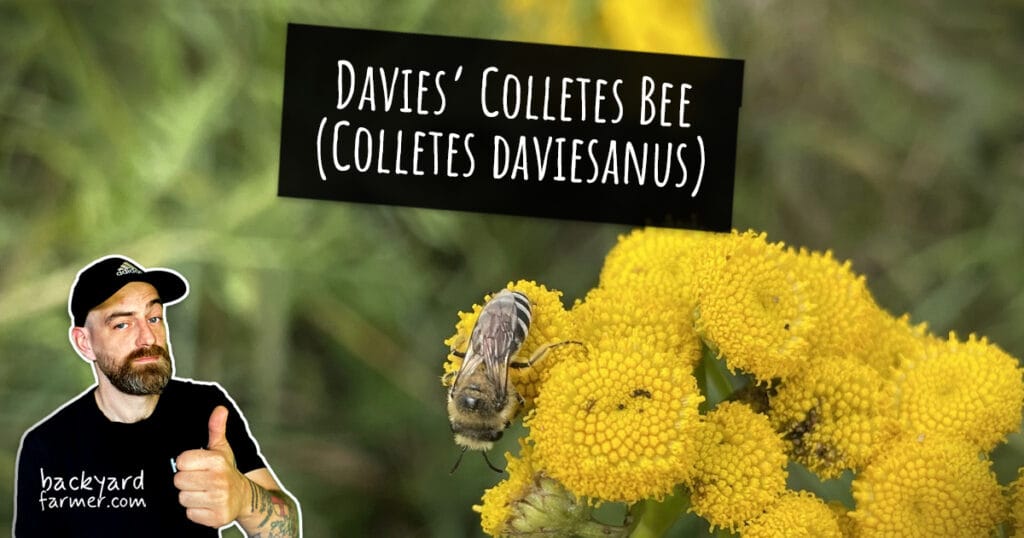Table of contents
- Introduction
- Understanding Three Sisters Planting: How Corn, Beans, and Squash Work Together
- How to Plant a Three Sisters Planting Garden for Maximum Yield
- Step-by-Step Planting Guide
- Maintenance & Care Tips
- Advanced Three Sisters Planting Techniques for Maximum Yield
- Common Three Sisters Planting Mistakes & How to Fix Them
- Harvesting & Using Three Sisters Planting Crops for Maximum Yield
- Three Sisters Planting: Final Thoughts & Next Steps
Introduction
Imagine a garden where plants naturally support one another, reducing the need for fertilizers, pesticides, and excessive watering. That’s the magic of Three Sisters Planting—a time-tested companion planting method used for centuries by Indigenous peoples of North America. It’s a sustainable way to maximize garden efficiency while working in harmony with nature.
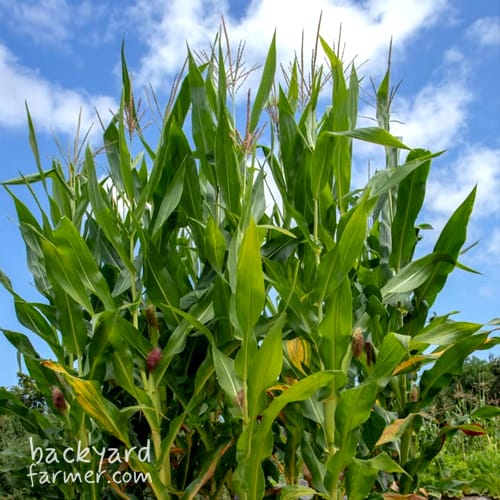
From using sustainable furniture in your outdoor spaces to ensuring your garden is as ecologically efficient as possible, every choice contributes to a more resilient, low-impact lifestyle. With the right approach, you can create a system of feeding yourself and your family without stretching your budget too far. You want your garden to be a place of eco-friendliness—and this method helps you make that happen.
By growing corn, beans, and squash together, this system creates a self-sustaining ecosystem that enriches soil fertility, boosts yields, and enhances biodiversity.
What Makes Three Sisters Planting So Effective?
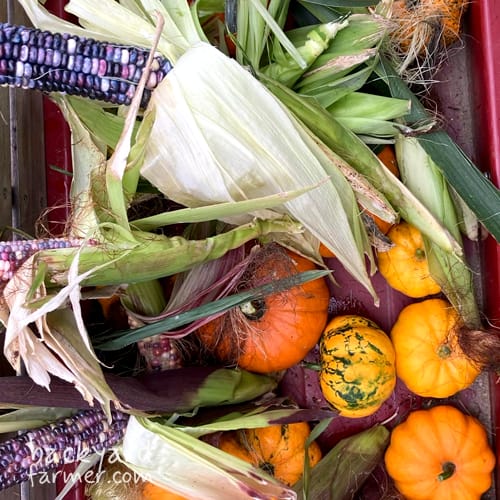
Three Sisters Planting is a companion planting technique where three crops—corn, beans, and squash—grow side by side in a way that benefits each one. Each crop plays a vital role:
- Corn acts as a natural trellis, giving beans a structure to climb.
- Beans fix nitrogen in the soil, enriching it for all three plants.
- Squash spreads across the ground, shading the soil to suppress weeds and retain moisture.
Not only is this method practical, but it also carries deep agricultural history. Passed down through generations of Indigenous farmers, it reflects an understanding of how to work with nature, not against it.
Why Use the Three Sisters Method?
Whether you’re a home gardener or a small-scale farmer, Three Sisters Planting offers several valuable advantages:
- Improves Soil Health – Beans naturally add nitrogen to the soil, reducing the need for artificial fertilizers.
- Maximizes Garden Space – Corn grows tall, beans climb, and squash spreads out, making the most of your growing area.
- Reduces Weeds & Moisture Loss – Squash leaves act as living mulch, shading the soil to prevent weed growth and reduce evaporation.
- Supports Sustainable Gardening – The plants work together to deter pests, cutting down on the need for chemical pesticides.
- Provides Nutritionally Balanced Harvests – These three crops form a nutrient-dense combination, providing essential carbohydrates, protein, and vitamins—a staple in sustainable gardening.
Who Benefits Most from Three Sisters Planting?
This method is ideal for:
- Beginner gardeners seeking a simple, low-maintenance growing system.
- Urban growers with limited space (it’s great for raised beds!).
- Homesteaders & self-sufficiency enthusiasts aiming to grow their own nutrient-rich food.
- Eco-conscious gardeners dedicated to sustainable, organic gardening practices.

By following the Three Sisters Planting method, you’ll build a resilient, self-sustaining ecosystem that boosts soil fertility and increases yields. In the next sections, we’ll walk you through planning, planting, and maintaining a successful Three Sisters garden—plus expert tips to help you get the most from your harvest. Get ready to transform your growing space with this powerful method!
Discover how to transform your entire garden into a productive paradise with our guide to foodscaping and edible gardening for beginners.
Understanding Three Sisters Planting: How Corn, Beans, and Squash Work Together
The Three Sisters Planting Method—a time-tested companion planting technique—brings together corn, beans, and squash to create a self-sustaining ecosystem that enriches the soil and boosts yields. This approach forms a mutually beneficial relationship where each plant plays a vital role in supporting the others and contributing to the overall health of the garden.
The Role of Each Plant
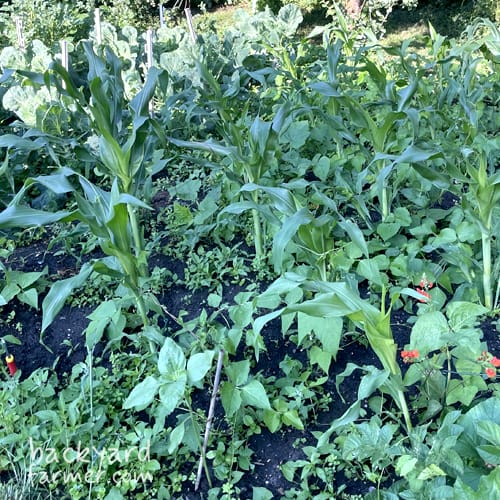
Corn: The Structural Support
- Acts as a natural trellis for climbing beans, allowing them to grow upward without the need for separate support structures.
- Provides shade for young seedlings, helping to retain moisture and protect tender sprouts from harsh sun.
- Performs best with varieties like sweetcorn, dent corn, and flour corn.
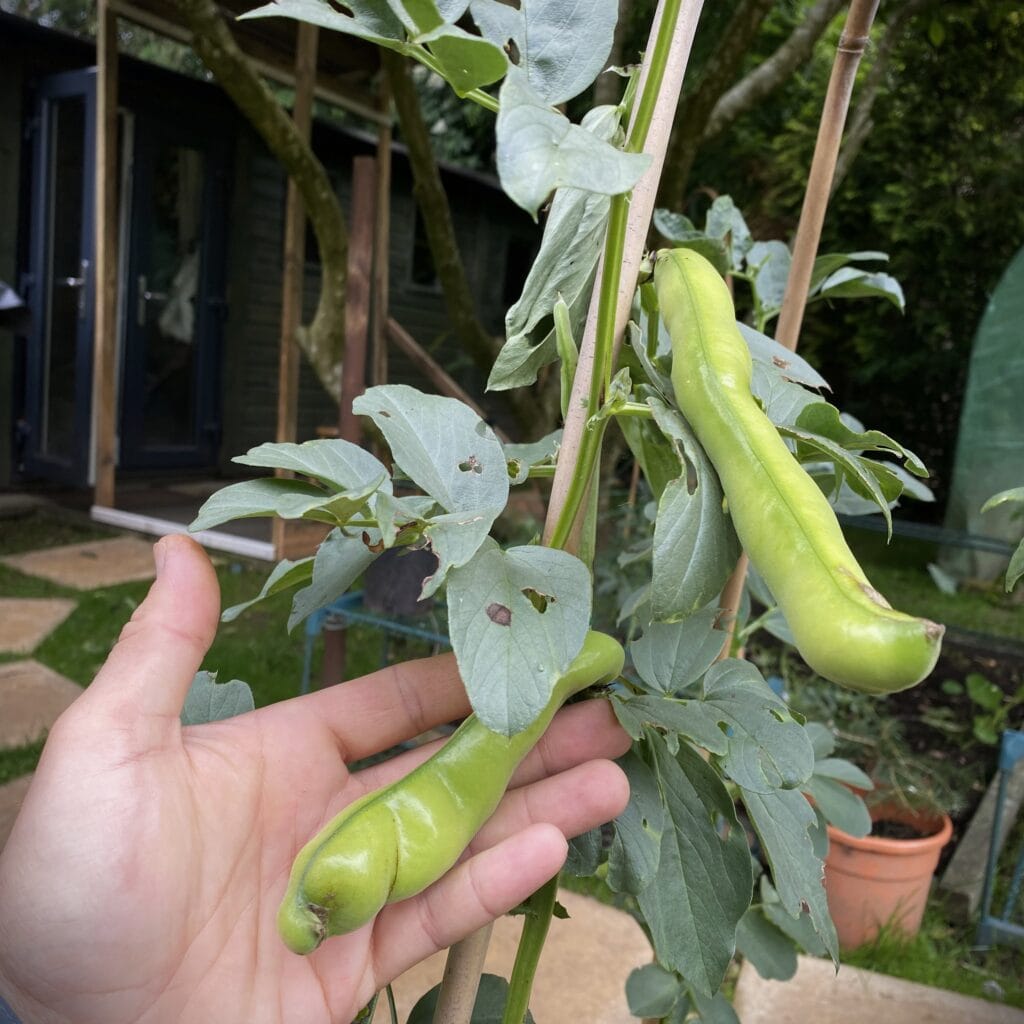
Beans: The Soil Enricher
- Fix nitrogen in the soil, naturally improving fertility and reducing the need for added fertilizers.
- Climb corn stalks efficiently, making smart use of vertical space.
- Great choices include pole beans, runner beans, and native climbing legumes.
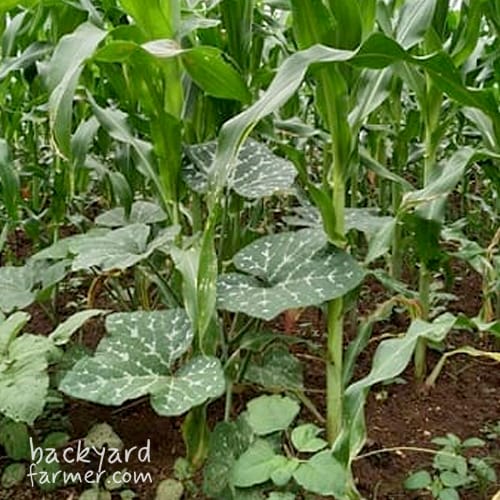
Squash: The Ground Cover Protector
- Sprawling vines shade the soil, suppressing weeds and minimizing moisture loss.
- Function as living mulch, helping regulate soil temperature and shield the roots of all three crops.
- Common varieties include pumpkins, butternut squash, and summer squash.
Why These Three Work Together
- Nutrient Cycling – Beans supply nitrogen that corn and squash rely on for healthy growth.
- Maximized Space Use – Corn and beans climb upward while squash spreads across the ground, making efficient use of garden space.
- Natural Pest & Weed Control – Squash vines block out weeds, and the diverse crop combination helps deter certain pests.
The Three Sisters Planting Method mimics nature’s balance, creating a self-sustaining food source that thrives with minimal intervention. Up next, we’ll dive into the step-by-step process of planting and maintaining a thriving Three Sisters garden.
How to Plant a Three Sisters Planting Garden for Maximum Yield
The Three Sisters planting method is a time-tested approach that maximizes space, improves soil health, and fosters a self-sustaining ecosystem. Follow this step-by-step guide to establish a thriving Three Sisters garden.
Choosing the Right Varieties
For the Three Sisters Planting method, selecting the appropriate corn variety is crucial, as it serves as a natural trellis for climbing beans. This wweet corn variety is particularly well-suited for this purpose: These varieties not only provide the necessary structural support for beans but also offer delicious and versatile harvests.
Each of the Three Sisters plays a unique role, so selecting the right varieties is essential:
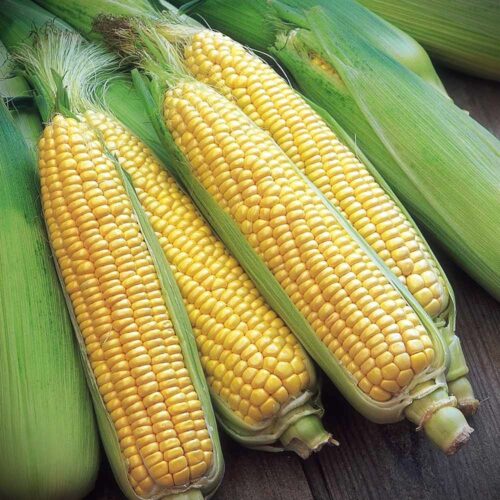
Sweet Corn F1 ‘Swift’: This super-sweet variety thrives in cooler soils and is versatile enough to be eaten raw or cooked.
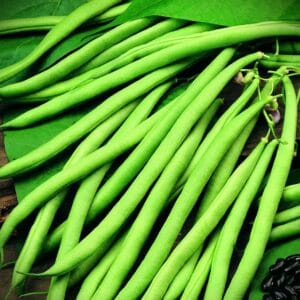
Climbing French Beans: A reliable variety that grows vigorously without overwhelming the corn, while enriching the soil naturally.

Butternut Squash – This winter squash variety is well-suited for the Three Sisters Planting method.
Planning & Layout
Traditionally, Three Sisters Planting gardens use mounds, but the method can be adapted to raised beds or rows:
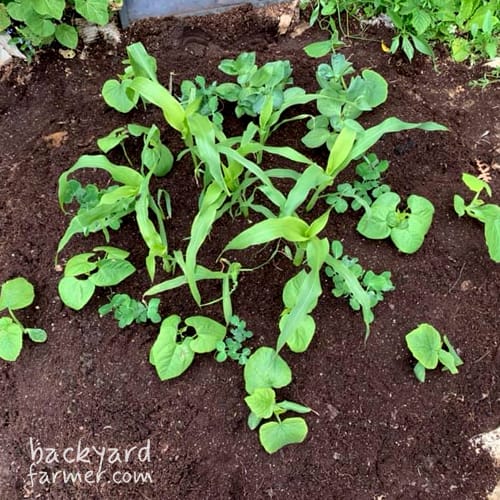
Traditional Mound Method:
- Shape circular mounds roughly 12 inches high and 18–24 inches wide, spaced 3–4 feet apart.
- This design improves drainage and helps warm the soil early.
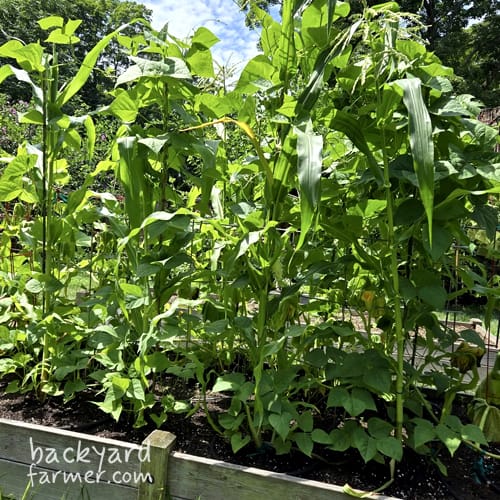
Raised Beds & Small Spaces:
- Modify spacing to suit compact gardens or containers.
- Use trellises to support beans if corn is limited or unstable.
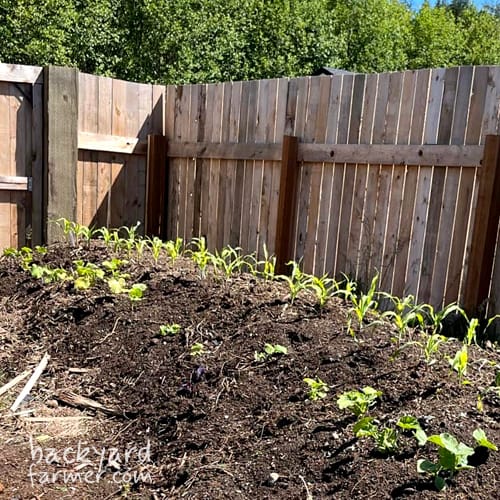
Row Planting Alternative:
- Sow corn first, then follow with beans and squash at proper intervals.
Step-by-Step Planting Guide
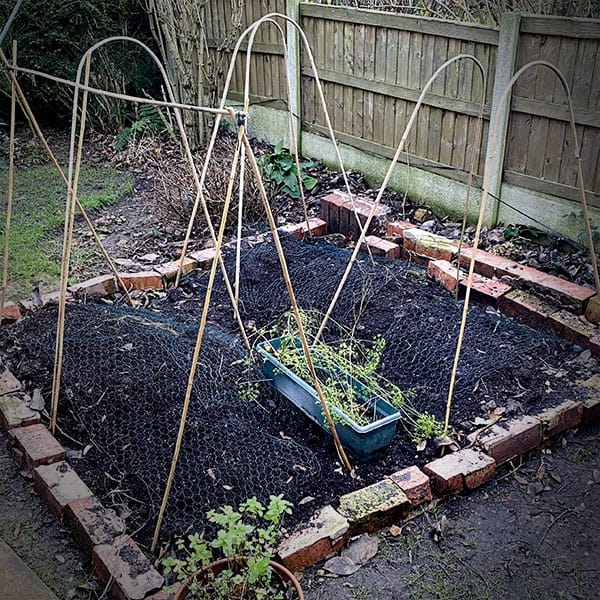
Prepare the Soil for Three Sisters Planting
- Pick a sunny location with well-draining soil.
- Mix in compost or organic matter to boost nutrients and improve structure.

Plant the Corn
- Sow 4–6 corn seeds per mound, spaced about 6 inches apart.
- Once seedlings reach 6 inches tall, thin them to the strongest 3–4 plants per mound.
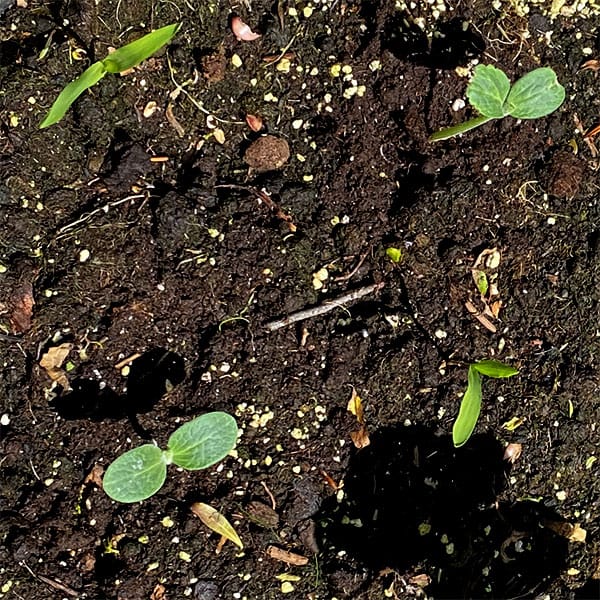
Add the Beans
- Plant 4–6 bean seeds around each corn stalk.
- Space them about 6 inches apart to ensure they can latch onto the corn as they grow.
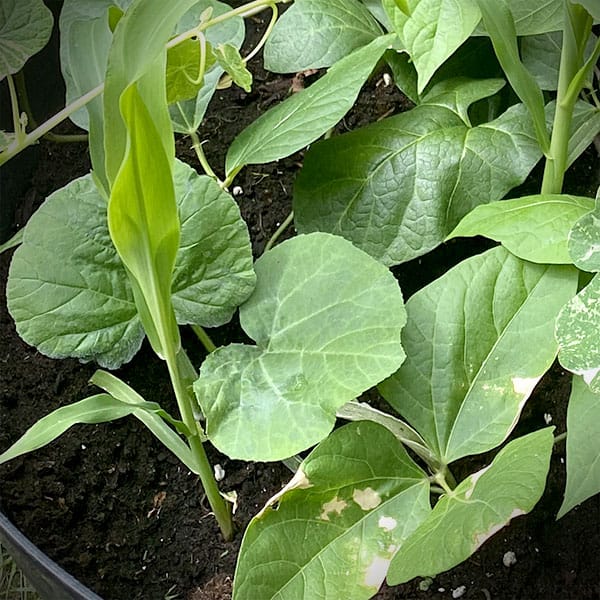
Introduce the Squash
- Sow 3–4 squash seeds at the base of each mound.
- Space seeds about 12 inches apart so vines can sprawl effectively across the ground.

Watering & Fertilizing
- Water deeply once per week, maintaining consistent moisture without waterlogging the soil.
- Add a layer of organic mulch to retain moisture and control weeds.
- Use compost tea or organic fertilizers in moderation—beans naturally improve soil fertility.
Looking for the perfect watering can for your garden? Check out our definitive guide to Haws watering cans for tips, history, and where to buy.
Maintenance & Care Tips

- Weed Control – While squash helps block weeds, hand-weed early to reduce competition.
- Pest Management – Interplant with marigolds or basil to deter unwanted insects naturally.
- Support for Corn – In windy conditions, stake corn or mound up soil around the base for added strength.
- Harvesting Timeline:
- Corn: Harvest in 70–100 days.
- Beans: Pick fresh in 50–60 days, or allow to dry for storage.
- Squash: Summer squash matures in 60–90 days; winter squash takes longer.
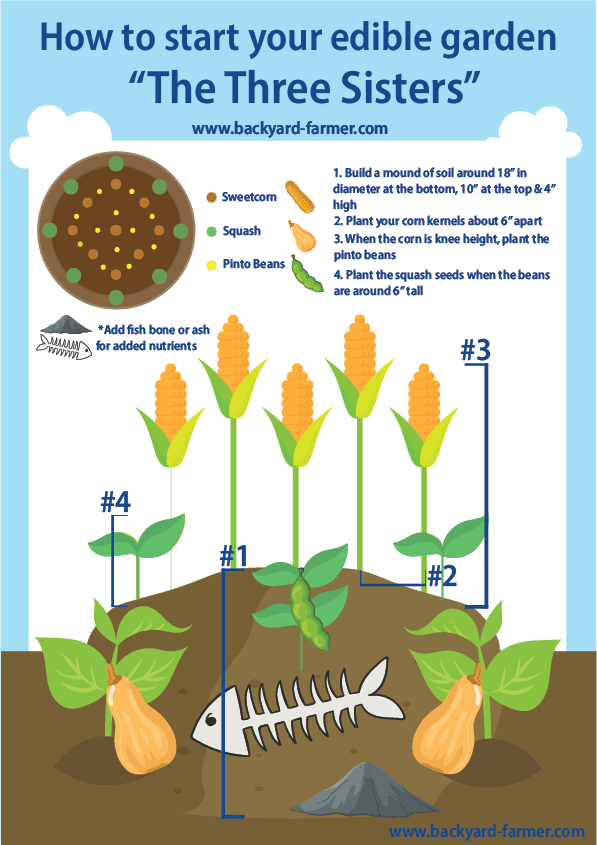
Free Three Sisters PDF Guide
By following this guide, you’ll grow a productive, sustainable Three Sisters Planting garden that requires little maintenance but delivers a generous harvest. Up next, we’ll explore advanced Three Sisters Planting techniques and adaptations to take your garden even further!
Download our PDF for a quick reference you can pull up on your phone whilst your out in the garden.
Advanced Three Sisters Planting Techniques for Maximum Yield
The traditional Three Sisters Planting method is a proven way to grow food sustainably. With a few smart adjustments, you can boost productivity, adapt to different climates, and maximize your harvest. By refining your Three Sisters Planting system, you’ll set your garden up for even greater success.
1. Growing in Raised Beds & Containers
Not everyone has space for traditional mounds, but you can still grow a thriving Three Sisters garden using raised beds or large containers.
Raised Beds:
- Space corn in a grid pattern rather than mounds for improved stability.
- Use a trellis for beans if the corn stalks aren’t sturdy enough.
- Make sure the soil is at least 12 inches deep to support squash roots.
Container Gardening:
- Choose deep containers (minimum 18 inches) to accommodate corn’s roots.
- Add bamboo stakes or trellises to help beans climb.
- Use compact squash varieties like zucchini or bush squash to avoid overcrowding.
2. Maximizing Pollination for Better Yields
Corn depends on wind for pollination, while beans and squash rely on insects. To ensure strong pollination and improved yields, try these tips:
- Plant at least 4–6 corn plants together to support better pollination.
- Hand-pollinate corn by shaking the tassels so pollen reaches the silks.
- Attract pollinators—like bees and butterflies—by planting sunflowers, borage, or marigolds nearby.
3. Enhancing Growth with Companion Plants
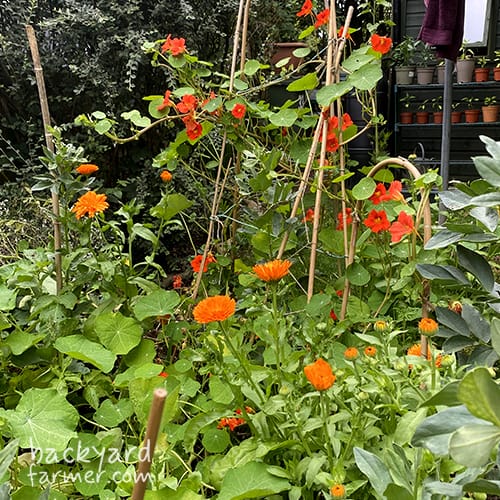
While corn, beans, and squash naturally support each other, adding more companion plants can improve pest control and boost soil fertility:
- Marigolds – Repel nematodes and harmful insects.
- Borage – Attracts pollinators and benefits squash.
- Radishes – Break up compacted soil and help deter squash vine borers.
- Basil & Nasturtiums – Help protect beans and squash from pests.
- Sunflowers – Provide additional vertical support for climbing beans.
4. No-Till & Permaculture Strategies for Three Sisters Planting
For a low-maintenance, regenerative system, incorporate no-till gardening and permaculture practices:
- Apply deep mulch (straw, leaves, or wood chips) to retain moisture and suppress weeds.
- Rotate your Three Sisters beds annually to prevent nutrient depletion.
- Plant cover crops like clover before the growing season to enrich the soil.
5. Adapting Three Sisters to Different Climates
The Three Sisters Planting method can be adapted to suit a wide range of growing conditions:
Cool Climates (UK, Canada, Northern US):
- Start corn indoors and transplant when temps reach 50°F (10°C).
- Choose fast-maturing squash like pattypan or bush types.
- Use black mulch to warm the soil in early spring.
Hot/Dry Climates (Southwest US, Australia):
- Pick heat-tolerant corn like Hopi Blue or Hickory King.
- Use drought-resistant beans, such as tepary beans.
- Grow desert-adapted squash like calabaza or acorn squash.
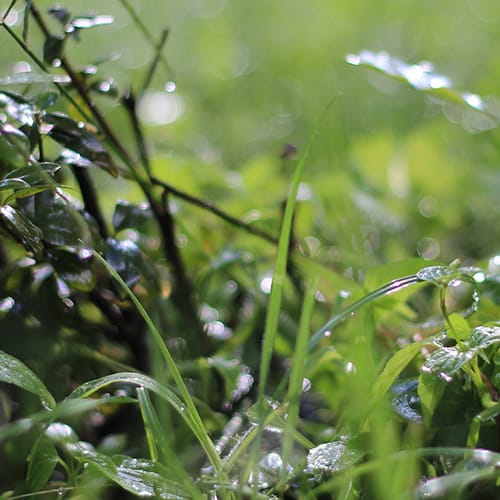
High Rainfall Areas:
- Improve drainage with raised rows or mounds.
- Use fungus-resistant bean and squash varieties.
- Increase spacing slightly to promote better airflow.
6. Boosting Yields with Crop Rotation & Succession Planting
To keep soil healthy and reduce pest buildup, rotate crops each year:
- Year 1: Three Sisters (corn, beans, squash)
- Year 2: Root crops (carrots, beets, potatoes)
- Year 3: Leafy greens (lettuce, spinach, kale)
- Year 4: Return to Three Sisters planting
To prolong your harvest, try succession planting:
- Stagger corn planting every 2–3 weeks for continuous harvests.
- Combine fast-growing bush beans with pole beans for steady yields.
- Mix early and late-season squash varieties for extended production.
By applying these advanced techniques, you’ll elevate your Three Sisters garden, gaining higher yields, greater resilience, and a more sustainable growing system.
Common Three Sisters Planting Mistakes & How to Fix Them
The Three Sisters Planting system is highly effective, but a few common mistakes can lead to weaker plants, lower yields, or overcrowding issues. Fortunately, with the right techniques, you can avoid these pitfalls and grow a thriving garden.
1. Corn Falling Over (Lodging)
The Problem:
- Corn stalks may become weak and topple due to wind, shallow roots, or improper spacing.
How to Fix It:
- Plant in clusters: Corn stands stronger when planted in blocks of at least 4–6 plants, rather than in single rows.
- Hill up soil: As corn grows, mound soil around the base of the stalks to improve stability.
- Choose wind-resistant varieties: Use shorter, sturdier heirloom corn or add support in windy areas.
2. Beans Overwhelming Corn Stalks
The Problem:
- Pole beans can grow aggressively and overpower the corn, hindering its growth.
How to Fix It:
- Choose slower-growing or lighter-climbing varieties such as runner beans.
- Delay bean planting: Sow beans 1–2 weeks after corn to give the corn a head start.
- Thin vines if they become too dense or heavy on the corn.
3. Squash Taking Over the Garden
The Problem:
- Squash vines can sprawl too far, crowding out corn and beans.
How to Fix It:
- Use bush varieties rather than sprawling types, especially in compact spaces.
- Train vines outward to prevent interference with other plants.
- Provide enough space: Keep mounds at least 3–4 feet apart to avoid overcrowding.
4. Poor Soil Leading to Weak Growth
The Problem:
- A Three Sisters Planting garden depends on rich soil, but corn, beans, and squash are heavy feeders and can quickly deplete nutrients.
How to Fix It:
- Prepare the soil well: Add compost, aged manure, or balanced organic fertilizer before planting.
- Plant cover crops: Use nitrogen-fixing crops like clover to build soil fertility before the season begins.
- Rotate crops annually to maintain healthy, productive soil.
5. Poor Pollination (Sparse Corn Kernels)
The Problem:
- Corn requires wind pollination, and low plant density can lead to poor kernel development.
How to Fix It:
- Grow corn in clusters instead of rows to improve pollination.
- Hand-pollinate: Gently shake tassels to spread pollen to the silks.
- Attract pollinators by planting flowers like sunflowers or borage nearby.
6. Pest & Disease Problems
The Problem:
- Insects like corn earworms, squash vine borers, and aphids can damage your crops.
- Diseases such as powdery mildew and root rot thrive in damp or crowded conditions.
How to Fix It:
- Use companion planting: Include marigolds, nasturtiums, or basil to deter pests.
- Practice crop rotation each season to break pest and disease cycles.
- Improve airflow: Space plants properly and prune large squash leaves to enhance circulation.
7. Timing Issues (Planting Too Early or Too Late)
The Problem:
- Planting too early in cold soil can cause seeds to rot.
- Planting too late may not leave enough time for crops to fully mature.
How to Fix It:
- Wait for warm soil: Ensure temperatures reach at least 60°F (16°C) before planting.
- Start seeds indoors in colder regions to get a head start.
- Use mulch to help warm the soil and retain moisture.
By avoiding these common mistakes, you’ll set up your Three Sisters Planting garden for success—and enjoy stronger plants, higher yields, and a more rewarding harvest. Up next, we’ll cover harvesting and using your homegrown Three Sisters crops so you can make the most of your garden’s bounty!
Harvesting & Using Three Sisters Planting Crops for Maximum Yield
After months of growth and natural cooperation between corn, beans, and squash, it’s finally time to harvest your Three Sisters Planting garden. This time-tested companion planting system supports healthy crops, improves soil balance, and produces abundant yields. Knowing when and how to harvest ensures maximum flavor, longer storage life, and better nutrition.
1. When to Harvest Each Crop
Corn
- Harvest Time: 70–100 days after planting, depending on the variety.
- Signs of Readiness:
- Silks turn brown and dry.
- Kernels release milky juice when gently pressed.
- Ears feel plump and firm.
- Best Practices:
- Pick in the morning for the best flavor.
- Twist ears downward and pull from the stalk.
- Use fresh within a few days, or preserve by drying or freezing.
Beans
- Harvest Time: 50–60 days for fresh beans, 90+ days for dried beans.
- Signs of Readiness:
- Fresh beans should be firm but not tough.
- Dried beans should have brown, brittle pods.
- Best Practices:
- Harvest regularly to encourage more pods.
- Allow some pods to fully dry on the vine for long-term storage.
- Store fresh beans in the fridge; keep dried beans in airtight containers.
Squash
- Harvest Time: 60–90 days for summer squash, 90–120 days for winter squash.
- Signs of Readiness:
- Summer squash (like zucchini) should be small and tender.
- Winter squash (like butternut or pumpkins) should have hard skin and sound hollow when tapped.
- Best Practices:
- Use a sharp knife to harvest, leaving at least 2 inches of stem.
- Cure winter squash in a warm, dry place for 10–14 days before storage.
- Store cured squash in a cool, dark area for longer shelf life.
2. Storing and Preserving Your Three Sisters Planting Harvest
- Corn: Blanch and freeze, or dry kernels for grinding into flour.
- Beans: Fully dry and store in airtight containers for long-term use.
- Squash: Keep in a root cellar or a cool, dark spot to maintain freshness.
- Seeds: Save seeds from each crop to restart your Three Sisters Planting garden next season.
3. Cooking with the Three Sisters
The Three Sisters provide a balanced, nutrient-rich meal, loaded with fiber, protein, and essential vitamins. Here are a few tasty ways to enjoy your harvest:
Traditional Three Sisters Stew
A hearty, Native American–inspired recipe combining corn, beans, and squash in a flavorful broth.
- Ingredients:
- 2 ears of corn (kernels removed)
- 1 cup cooked beans
- 2 cups diced squash
- 1 onion, diced
- 2 cloves garlic, minced
- 4 cups vegetable broth
- Salt, pepper, and herbs (thyme, oregano)
- Instructions:
- Sauté onion and garlic until fragrant.
- Add squash and cook until tender.
- Stir in beans, corn, and broth. Simmer for 15–20 minutes.
- Season and serve warm.
Cornbread with Bean Flour
Grind dried beans into flour and mix with cornmeal for a gluten-free, high-protein cornbread.
Roasted Squash and Corn Salsa
Toss together roasted squash, fresh corn, lime juice, and cilantro for a seasonal salsa.
Bean & Squash Casserole
Layer beans, sliced squash, tomatoes, and cheese, then bake until golden and bubbly.
4. Nutritional Benefits of the Three Sisters
- Corn delivers complex carbohydrates for lasting energy.
- Beans supply protein and fiber, supporting muscle and digestive health.
- Squash is rich in vitamins A and C, promoting immunity and vision.
By harvesting and using your Three Sisters Planting crops efficiently, you’ll enjoy a sustainable, homegrown bounty that nourishes both body and soul. Up next, we’ll wrap up with final tips and takeaways for success!
Three Sisters Planting: Final Thoughts & Next Steps
The Three Sisters Planting system is more than just a time-tested gardening technique—it’s a proven companion planting method that empowers you to grow food sustainably, efficiently, and naturally. By working together, corn, beans, and squash form a self-sustaining ecosystem that improves soil health, boosts plant resilience, and reduces the need for synthetic fertilizers or pesticides. Whether you’re aiming to maximize garden space or embrace a more organic approach, this method makes it easy to cultivate a thriving, low-maintenance garden.
Key Takeaways
- Corn acts as a natural trellis, supporting beans as they climb.
- Beans fix nitrogen in the soil, enriching it for all three crops.
- Squash spreads across the ground, suppressing weeds and conserving moisture.
- The Three Sisters method adapts well to raised beds, small gardens, and diverse climates.
- Proper harvesting and storage allow you to enjoy fresh, nutritious food all year long.
Why You Should Try the Three Sisters Planting Method
Whether you’re just starting out or have years of gardening experience, the Three Sisters Planting method provides a simple yet highly effective approach to companion planting. Since the plants naturally support one another, you’ll spend less time on maintenance and more time enjoying the process—and the harvest.
Next Steps
- Plan your Three Sisters garden based on your space, goals, and growing conditions.
- Choose varieties of corn, beans, and squash suited to your local climate.
- Explore advanced techniques like raised beds, crop rotation, and companion flowers.
- Enjoy the culinary and nutritional rewards of your homegrown harvest.
The Three Sisters method has stood the test of time because it works. With the right care and a little experimentation, you can create a self-sufficient, productive garden that feeds both your body and your connection to the earth. So why wait? Start planting and discover the power of growing the Three Sisters in your own garden.


